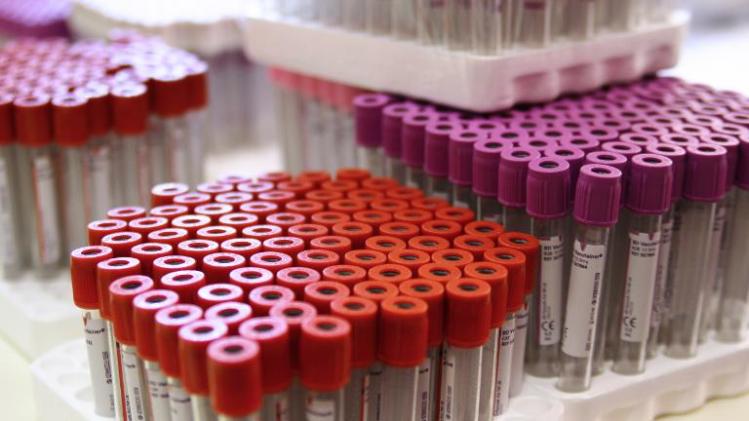
Racks of vacuum venipuncture test tubes filled with blood are pictured on July 6, 2012 (AFP Photo/Marion Berard)
Only one person is believed to have been cured of HIV. American Timothy Brown, who suffered from leukemia, received a bone marrow transplant from a rare donor who was resistant to HIV, and has shown no sign of the virus for six years.
"The return of detectable levels of HIV in our patients is disappointing, but scientifically significant," said Timothy Heinrich, a physician-researcher in the Division of Infectious Diseases at Brigham and Women's Hospital in Boston.
"Through this research we have discovered the HIV reservoir is deeper and more persistent than previously known," he said in a statement sent to AFP.
Heinrich first shared the news with fellow researchers at an international AIDS conference in Miami, Florida on Thursday.
Both HIV-positive men received bone marrow transplants as treatment for a kind of blood cancer known as Hodgkin's lymphoma, one in 2008 and the other in 2010.
About eight months after their operations, HIV was no longer detectable.
The patients stayed on antiretroviral therapy even after their HIV was undetectable, and eventually decided to cease taking the drugs earlier this year.
In July, doctors announced early, encouraging results: one patient appeared to still be HIV-free after being off the drugs for seven weeks and the other for 15 weeks.
But signs of HIV soon returned. They were found in the first patient 12 weeks after stopping therapy, and in the second patient after 32 weeks.
"Both patients have resumed therapy and are currently doing well," Heinrich said, adding that the patients do not wish to be identified in the media.
He said it was important to share the results with fellow researchers, because they signal "that there may be an important long-lived HIV reservoir outside the blood compartment."
"We have demonstrated HIV can be reduced to undetectable levels by very sensitive research assays, and the virus persists," he said.
Prior to the viral rebound, one of the patients had only about 1,000 cells in his body left with traces of HIV, and the other had just 100, according to the Foundation for AIDS Research, amfAR, which funded the study.
"These two cases are telling us some information that we weren't otherwise going to be able to learn," said Rowena Johnston, director of research at amfAR.
"As much as it is disappointing for the patients themselves, it is absolutely helping us to learn more about what it is going to take to cure HIV."
Unlike Brown, these patients' bone marrow transplants did not come from donors that carried a genetic resistance to HIV by lacking a CCR5 receptor, so they were not afforded protection against the virus by that mutation.
The two men received transplants from donors with the CCR5 receptor, which acts as a gateway allowing HIV to penetrate the cells.
Researchers had hoped that by continuing to treat the men with antiretroviral drugs during the transplant process and afterward, the medicine might have prevented the donor cells from becoming infected while a new immune system was established.
Instead, it appears the virus may have been lurking undetected in their bodies, infecting the men as if for the first time once repressive drug therapy was stopped.
Still, Myron Cohen, an expert on HIV/AIDS at the University of North Carolina at Chapel Hill, said it was too early to draw conclusions.
"I think we need more information," he told AFP in an email.
"The reason(s) for suppressed growth of HIV in these patients is still being studied, so recurrence -- if it occurred -- needs to be seen as part of a continuum," he said.


No comments:
Post a Comment